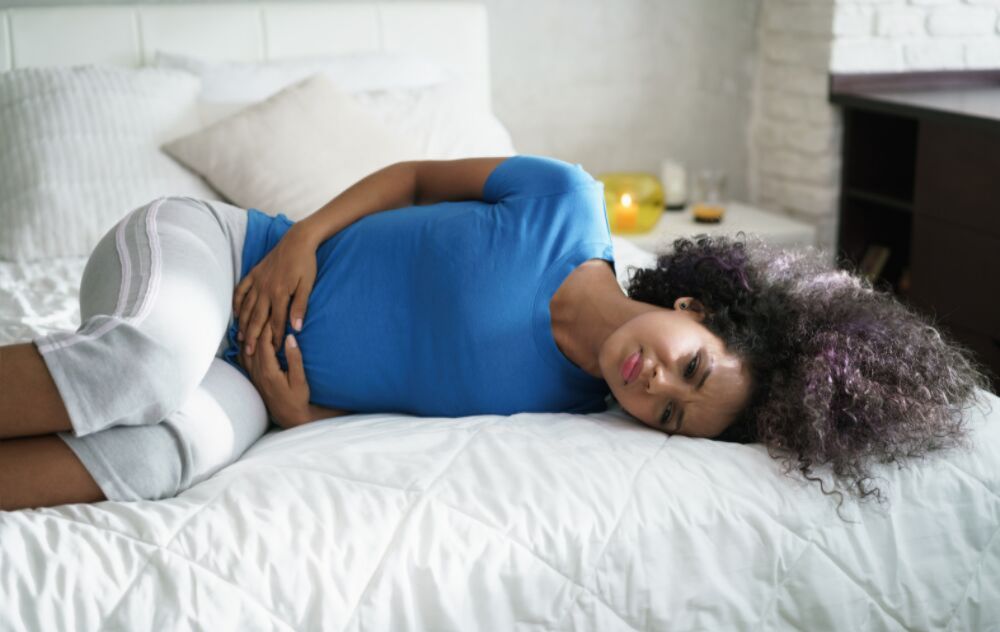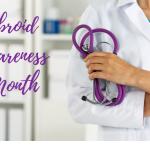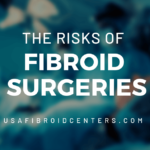
Maybe you’ve searched online for, “Are fibroids preventable,” or “do natural remedies and cures actually work for fibroids?” If so, we may be able to help you at USA Fibroid Centers. Many of our patients come to us asking questions on whether or not you can actually prevent uterine fibroids or if adopting a healthier lifestyle can delay their development.
At least 30% of women develop fibroids during their 20s or 30s, and that number rises to over 80% of women who will experience them before the age of 50.
Despite their prevalence, fibroids are a condition most women continue to be unaware of — from symptoms to potential treatments. Around 52% of women continue to think they are not at risk of developing uterine fibroids, despite how common they are. Shockingly, many people continue to have trouble finding clear answers on the causes and risk factors of fibroids. Our main focus to raise awareness that heavy, long periods are not normal and should not negatively impact your quality of life.
What Are Fibroids?
Also known as myomas, leiomyomas, uterine fibroids are benign growths that form within or around the uterine walls. These tumors can range from microscopic growths to large masses and can occur in single instances or groups. While many women develop fibroids sometime in their lives, most do not know it because some fibroids cause no symptoms or are too small to be harmful. But when they develop into bulky, larger growths, fibroids can enlarge or distort the uterus, causing symptoms such as:
- Heavy menstruation
- Periods lasting 10 days or longer
- Frequent urination or difficulty emptying your bladder
- Pain or pelvic pressure
- Protruding abdomen or belly
- Backache or leg pain
- Constipation
- Pain during sex
- Fatigue from anemia
To learn more about the above symptoms and see if your pain could be caused by uterine fibroids, take our 1-minute quiz now.
Learn More About Fibroid Symptoms
Every woman is different and may experience different symptoms. While doctors cannot define a specific cause for fibroid growth, research indicates that the following factors may lead to their development:
- Developmental hormones like estrogen and progesterone, which increase in production during pregnancy and childbearing years
- Genetic changes from normal uterine muscle cells
- Other body substances like insulin-like growth factors, which contribute to body tissue maintenance
Risk Factors of Uterine Fibroids
Besides being a woman in her childbearing prime, certain internal and external factors can increase your chances of developing uterine fibroids, including:
- Race: Research shows that black women are more likely to develop fibroids than women of other races. Hispanic women also face a higher likelihood of myomas, followed closely by the risk factor of Caucasian women.
- Genetics: You’re at an increased risk for fibroids if your mother, sister, or someone else in your family has had them.
- Environmental factors: Factors like vitamin D deficiency, obesity, use of birth controls, too much red meat, drinking alcohol, or experiencing your period at a young age may all increase your likelihood of myoma development.
Are Fibroids Preventable?
If you are wondering “are fibroids preventable” you are likely concerned that you may be at risk. Unfortunately, fibroids cannot be prevented. There is no method that will prevent or cure fibroids on its own. However, some research shows that healthy lifestyle habits may help you temporarily manage your symptoms. Aim to incorporate:
- Healthy diet: Maintaining a diet rich with green vegetables, cruciferous vegetables, fruits, and healthy dairy may decrease the symptoms of fibroids, while diets high in sugar may have the opposite effect in some women. If your period is especially heavy or lasts a long time, make sure to eat foods that contain iron to avoid developing an iron deficiency.
- Regular exercise: Incorporating exercise into your routine can help manage myoma symptoms. These include yoga, stretching, aerobics, swimming, and jogging. These activities help induce endorphins that manage pain and reduce cramping.
- Hydrating: Drinking water helps reduce bloating and consuming hot tea can increase blood flow may relax cramped abdominal muscles. This can also help constipation and symptoms of anemia.
- Avoid caffeine: May help reduce pelvic pain and abdominal pressure if you cut caffeine out of your diet.
- Eat fiber: Consuming foods rich in fiber can help decrease constipation related to uterine fibroids.
- Vitamin D supplements: Some studies have shown that taking these may help reduce your risk of developing fibroids. It is important to talk to your doctor before regularly taking any supplements.
Remember, these natural methods may offer only temporary relief — medical treatment is still necessary to eliminate uterine fibroids and get lasting, effective results. Managing fibroid symptoms through lifestyle changes and healthy habits may help in the short-term; however, fibroids can become a progressive disorder getting more severe as time goes on.
How Can I Get Rid of My Fibroids?
While there are technically no scientifically proven methods for preventing fibroids from forming, there is a non-surgical option that makes treatment more convenient. Uterine Fibroid Embolization (UFE) is a minimally invasive outpatient procedure employed to shrink fibroids. Using a tiny catheter to block the blood vessels nourishing the fibroids, UFE is FDA-approved and has a high success rate for symptom elimination.
Over 90% of women report seeing a significant improvement in their fibroid symptoms in the first few weeks following their UFE treatment.
Up to 62% of women are unaware that UFE is an option — this disparity is shocking that women are not being told about this option that holds numerous benefits for women who want to avoid a hysterectomy.
At USA Fibroid Centers, we use the gold standard in UFE, offering you an effective procedure in less than 30 minutes. UFE allows you to retain your uterus and fertility, offers a shorter recovery than invasive surgeries, does not interfere with hormones, and does not require hospitalization or stitches. You don’t have to go through this journey alone — we’re here to give you hope. Find the USA Fibroid Centers location closest to you by giving us a call at 855-615-2555 and click below to schedule your appointment online today.



